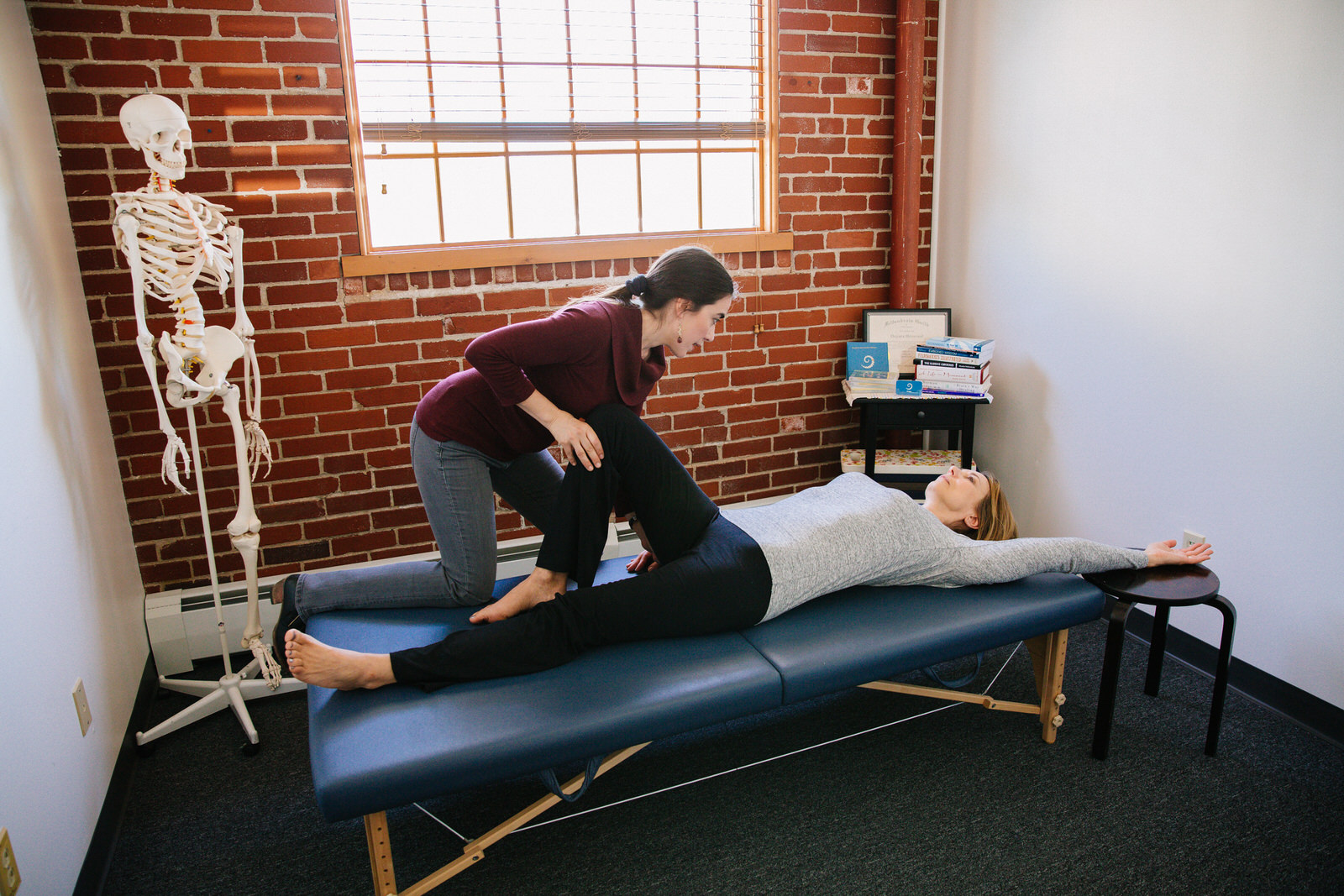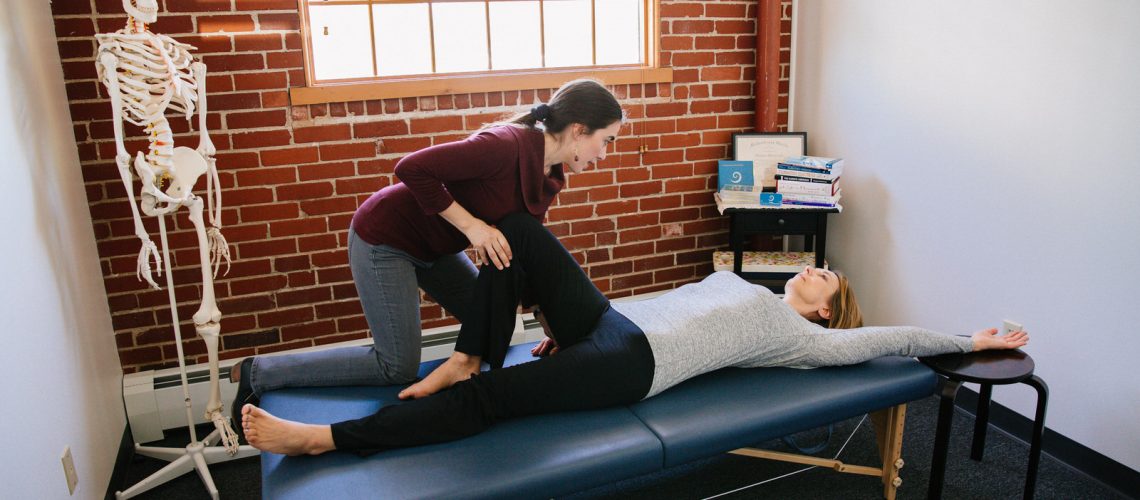Guest post by Dayana Pereira
In an age of immediate gratification, when pleasure is fast and it’s easy to hide behind screens, it takes a mountain of strength to choose what’s hard, knowing that it might take time and that it will push you out of your comfort zone. For me, this time came recently when I found The Happy Body program.
As a Feldenkrais® Practitioner, I have been studying human potential, awareness, and movement for over 20 years. The Feldenkrais Method of Somatic Education, as it is formally called, was created by Dr. Moshe Feldenkrais in the 1950’s and reached the US in 1972. There are currently 7,000 teachers throughout the world.
Combining neuroplasticity, biomechanics, mindfulness, movement, and science to access our human potential to learn how to learn, the method excels at identifying limiting habits (of acting, thinking, feeling and sensing) and replacing them with non-habitual yet more efficient, better organized, powerful new patterns. Its ability to “reprogram” the brain and improve human capacity for proper movement has been recognized by the scientific community as well as used with great success by people from all walks of life: elite athletes, world class performers, PTSD and cancer survivors. It can treat a wide range of injuries, chronic pain, and neurological and learning disorders, from babies to the elderly.
What does Feldenkrais have to do with The Happy Body?
You may be wondering what does Feldenkrais has to do with Jerzy Gregorek and The Happy Body…. Well, there are many similarities between these two approaches to improvement and learning, as well as between the two men who developed them.
Let’s start at the origin, with their Eastern European roots (the Ukraine for Feldenkrais, Poland for Gregorek): The act of escaping their home countries and living as refugees in Europe was probably a blueprint that would help them break limiting environments throughout their lives. As immigrants (I know this first hand), it’s tempting to try hard to blend in, to “disappear” into the masses, to assimilate. However, both Feldenkrais and Gregorek chose instead to stand up and lead others to become the best version of themselves possible.
It is also interesting that both Jerzy and Moshe studied engineering, which established a solid scientific base for later movement research, as well as a systematic approach to learning and an analytic understanding of data. In an interesting counterpoint, they also learned hypnosis (Gregorek learned Transcendental Meditation as well), which would be a touchstone in both methods’ ability to engage the parasympathetic nervous system, the one that allows resting, digesting, and conservation of energy.
Both are accomplished athletes: Feldenkrais became one of the first westerners to obtain a Judo black belt and was chosen by Judo’s founder, Jigoro Kano, to introduce Judo in Europe and pen books about it. Jerzy, an Olympian, has won several world records in weightlifting, some which remained untouched for many years. He became a successful Olympic weightlifting coach and is also a writer and poet.
A Capacity for Curiousity
Obviously, there is a common background: studies of anatomy, chiropractic medicine, physics, the role of gravity in biomechanics, psychology, human development. Not as obvious is the common drive to discover ways to improve themselves and gain self-awareness (Jerzy recovered from a serious back injury where he was temporarily paralyzed, Feldenkrais from severe knee injuries that had no medical cure at the time).
Their capacity to dive deeply and thoroughly explore whatever made them curious is almost mythical: His first students tell stories of how Feldenkrais wouldn’t ride in a car until he knew exactly how every switch, pedal and button worked; Aniela tells us that Jerzy studied for—and passed—the real estate brokerage exam when he became interested in selling their home. The anthropological need to know “how things work” inside and out would guide the lives of these two brilliant men, who would, in turn, choose to dedicate their lives to the service of humankind, discovering ways to improve themselves and others, and teaching many how to continue their innovative work.
I am lucky to be a teacher of the Feldenkrais Method, having discovered this amazing body of work in my native Uruguay in 1995. Absolutely fascinated by the subtle yet deep and transformative nature of this method, I was immediately determined to teach it.
The concept of neuroplasticity, on which the Feldenkrais Method is based, and very topical since Dr. Norman Doidge wrote his bestseller The Brain that Changes Itself in 2007, is not a new one. For centuries we have used the unique human capacity of our brains to re-wire, quickly change, and learn new skills to overcome obstacles and break frontiers. However, in the 1950’s, when Feldenkrais was experimenting with how movement combined with awareness could heal his badly injured knee, the paradigm was that the brain was hardwired, area specific, and that brain cells die as we age, making learning new skills more difficult, if not impossible. Nowadays it’s well known that we continue generating new cells until we die, that the brain and its interconnected neural networks can be re-wired, and that the capacity for learning new things is possible, no matter how old the person is.
Fast Forward to 2017
After countless hours of Feldenkrais practice on myself and with others, many advanced trainings, postgraduate programs and extensive reading, my body and mind were highly organized, aligned and youthful. I could teach groups and individuals how to access more of their brain potential and achieve greater flexibility, graceful movement, and better posture. I witnessed how people recovered from injuries, improved their performance, overcame trauma. Students left my classes joyful, inspired, more vital. Still, there was a missing link in my ideal for my clients, and also for myself: optimal strength.
I got away without building much muscle during my years living in NYC when I was practicing Aikido. I could throw big guys on the mat by using my hips, coordination, and flexibility in this peaceful martial art. The body intelligence that Feldenkrais had cultivated in me could overpower brute force (most of the times).
But when I moved to Pennsylvania and started rock climbing, my limitation became obvious: my flexibility allowed me to climb hard, my deep training in how to learn and focus attention quickly put me at a higher level than most beginner climbers. Yet as soon as I started taking on more challenging, overhanging routes I realized that my lack of strength was getting me hurt: my shoulders were the first to show me the pain.
I wasn’t alone in this place: many of my clients arrived at my classes and private sessions feeling weak. Others were injured from lifting weights inefficiently, running, too much yoga or Pilates. And even after succeeding at improving their quality of life, and seeing them heal from their injuries, I still couldn’t mentor clients in how to become stronger. I knew that my approach was lacking balance; there were tools missing from my toolbox, even after so many years of refined movement education and training.
Then after hearing Jerzy interviewed on Tim Ferris’s podcast, I did some research and found his and Aniela’s Happy Body program. I couldn’t believe it: the complete, balanced way they spoke about strength training and nutrition, how they incorporated change in gradual increments and mindfulness and attention during movement reminded me of Feldenkrais. Yet the emphasis was different: to gain strength and muscle, to reduce fat, and to balance the body and mind with relaxation and a sane, reasonable food plan. It seemed the perfect complement to my training and a very intelligent approach: I was again hooked.
I picked up The Happy Body book and started to do the exercises on my own. Three different times I started and stopped, I couldn’t keep myself motivated. And then life gave me a beautiful gift: a private training session with Jerzy in NYC. This was not only the jump-start that I needed to reconnect me with my potential, it was also a demonstration of coaching at the highest level: clear, generous, demanding and supportive. He identified my weaknesses and helped me become stronger; guided me in recruiting more body intelligence while acknowledging the areas where I was succeeding.
Many More Similarities
I have since become aware of many more similarities between the Feldenkrais Method and The Happy Body program:
- Emphasis on a daily practice, routine, sequence, “priming”
- Augmenting self-determination and self-awareness
- Focus on breathing
- Meditative state generated by movement
- Activation of the parasympathetic system through relaxation
- Cultivating joy in the movements performed
- Not rushing to finish; stopping anxiety before it takes hold
- Use of the singularity of the brain: one thing at a time
You are probably thinking… perfect! For me, it was a match made in heaven. Then the hard aspects of this choice really hit me: changing my habitual way of movement, allowing myself to learn a new discipline with the mind of a beginner, accepting that the work I have devotedly dedicated myself to for half of my life is not sufficient.
Another hard choice: committing to a daily practice, routinely performing exercises that take effort to begin but feel great once you’re into them, enjoying the sweating and feeling the musculature work (aka soreness). Remembering to relax completely before and after the lift. Renewing the commitment every day. Consistency, discipline, and showing up (for me, this was 95% of the work).
An even harder choice: putting away the extra drink, the second serving, becoming mindful of eating habits while keeping a schedule and collecting data regarding my diet and its effects on me.
Overall, the benefits outnumber the initial challenges: after only a few weeks of training, I am already losing weight, building muscle. I feel stronger, more vital, happier. The meditation practice is an effective way to quiet the monkey mind that runs me sometimes. I have found a graceful, efficient tool that can help me attain my ideal body weight, strength level, and the joy of being in my body. And it perfectly complements the aware, efficient movement practice that I love to teach and enjoy so much as a Feldenkrais practitioner.
Continuing My Journey
I decided to pursue training to become a mentor of The Happy Body program and to share with others this amazing and transformative program. In combination with Feldenkrais, I know it can help everyone achieve their full potential, overcome any obstacle, and attain optimal health, vitality, and strength.
As I continue my journey as a perpetual learner and refine the endless art of self-improvement, I am deeply grateful for becoming a bridge between these two brilliant disciplines, knowing that Feldenkrais and Gregorek, like bountiful islands in the sea of knowledge, were meant to be linked.

Dayana Pereira | Feldenkrais Practitioner and Happy Body Mentor
“Easy choices, hard life. Hard choices, easy life.”
Jerzy Gregorek
“We do not work with people’s problems, but with their health. Health as the capacity to recover from shock; the ability to overcome obstacles; the capacity to live one’s dreams.”
Moshe Feldenkrais
DEEPER CONTEMPLATION
Do you believe in a universal message and/or different solutions to the same problem? What has inspired your beliefs?
Leave your response below in the comments.



[…] AUGUST 17, 2017 / Originally published in: https://thehappybody.com/blog/feldenkrais-meets-gregorek/ […]